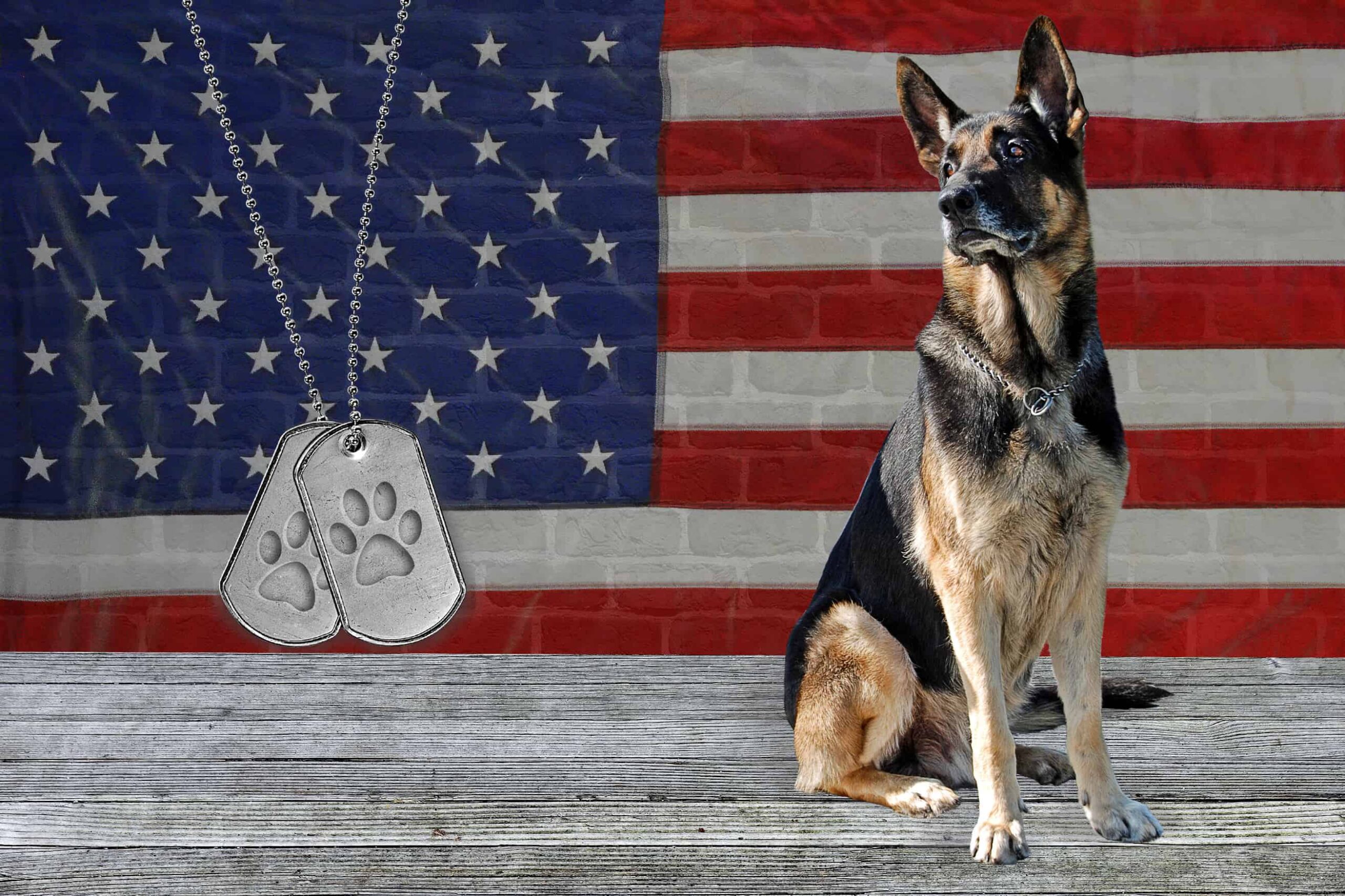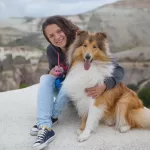Memorial Day is a time to remember and honor the brave men and women who made the ultimate sacrifice while serving in the military. As we pay tribute to these fallen heroes, it is important to also remember the four-legged soldiers who stood by their side and played a crucial role in protecting our freedom – the military K9s. In this article, we commemorate the selfless contributions of these loyal and courageous canines, shedding light on their invaluable service and the lasting impact they have had on our nation’s history.
The history of military K9s spans back centuries, with these incredible canines playing a pivotal role in various conflicts and wars throughout time. Their unwavering loyalty, intelligence, and unique capabilities have made them invaluable assets to the armed forces.
One of the earliest recorded uses of dogs in military operations dates back to ancient civilizations. Dogs were employed by armies in roles such as messenger dogs, carrying valuable information across enemy lines. Their speed, agility, and ability to navigate through difficult terrain made them effective messengers.
In more recent history, the use of military dogs became more widespread during World War I. Both the Allied and Central Powers utilized dogs for various tasks, including delivering messages, laying telegraph wires, and serving as sentries. These early deployments highlighted the dogs’ keen senses and ability to perform under pressure.
However, it was during World War II that the United States officially recognized the value of military dogs and established the War Dog Program in 1942. Under this program, thousands of dogs were trained and deployed to serve alongside American troops. These dogs were specifically trained for different roles, such as scout dogs, patrol dogs, messenger dogs, and mine detection dogs.
One notable breed that emerged during World War II was the German Shepherd, known for its intelligence, loyalty, and versatility. German Shepherds became a popular choice for military use due to their trainability and adaptability in various environments. These dogs were used for a wide range of tasks, including scouting, detecting enemy presence, and providing guard duty.
Over the years, the role of military dogs has continued to evolve and expand. Today, military working dogs are trained to perform specialized tasks such as explosive detection, drug detection, search and rescue operations, and even specialized combat roles. These highly skilled canines undergo rigorous training programs to develop their abilities and ensure they can manage the challenges they may face on the battlefield.
The history of military K9s is a testament to the remarkable bond between humans and dogs, as well as the incredible contributions these animals have made to military operations. They have saved countless lives, protected our troops, and provided critical support in challenging and dangerous situations.
Duties and Contributions of Military K9s:
Military K9s have a wide range of duties and make significant contributions to military operations. Their specialized training and unique capabilities enable them to perform tasks that are crucial to the success and safety of military personnel.
Let’s explore some of the key duties and contributions of military K9s:
- Explosive Detection: One of the most vital roles of military K9s is detecting explosives and improvised explosive devices (IEDs). Their exceptional sense of smell allows them to locate hidden explosives, ensuring the safety of military personnel and civilians in combat zones or during security operations.
- Drug Detection: Military K9s are trained to detect narcotics and illegal substances. They play a crucial role in identifying and apprehending drug traffickers, intercepting drug shipments, and preventing the infiltration of drugs into military installations.
- Search and Rescue: Military K9s are highly skilled in search and rescue operations, especially in locating missing or injured individuals in disaster areas or hostile environments. Their keen senses and agility enable them to locate survivors, providing critical assistance in humanitarian efforts and during combat missions.
- Patrol and Security: K9s are employed for patrolling military bases, installations, and other sensitive areas. With their acute hearing and exceptional tracking abilities, they can detect and deter intruders, providing an extra layer of security.
- Combat Support: Some military K9s are specially trained for combat roles, such as scouts and attack dogs. These dogs assist in locating enemy positions, detecting ambushes, and providing early warning to their handlers. Their presence can greatly enhance situational awareness and help safeguard military personnel in hostile environments.
- Psychological Support: Military K9s also offer invaluable psychological support to service members. The presence of a loyal and affectionate dog can provide comfort, reduce stress, and boost morale, especially during challenging times or when soldiers are far away from their families.
Training and Bonding:
The training and bonding process between military K9s and their handlers is a crucial aspect of their preparation and effectiveness in performing their duties. It takes time, dedication, and expertise to build a strong partnership between a handler and their K9 counterpart.
Let’s explore the training and bonding process involved in creating these exceptional teams:
- Basic Training: Military K9s undergo rigorous basic training to develop the fundamental skills necessary for their roles. This includes obedience training, socialization, and conditioning exercises to build a solid foundation of discipline, focus, and responsiveness. They learn commands, hand signals, and proper behavior in various environments.
- Specialized Training: Once they have mastered the basics, military K9s receive specialized training tailored to their specific roles. This can include explosive detection, drug detection, search and rescue techniques, patrol and apprehension tactics, or combat-specific skills. Specialized trainers with extensive experience in each field guide the dogs through intensive training programs designed to hone their unique abilities.
- Handler Training: Simultaneously, handlers undergo training to learn how to effectively communicate with and manage their K9 partners. They develop skills in reading the dog’s body language, interpreting their signals, and reinforcing desired behaviors. Handlers learn to establish trust, establish clear commands, and maintain a strong bond with their K9 counterparts.
- Bonding and Partnership: Throughout the training process, a strong bond between the handler and the K9 is fostered. Handlers spend countless hours working closely with their dogs, building trust, and developing a deep understanding of each other’s strengths and limitations. Activities such as play sessions, exercise, and shared downtime help solidify the bond and create a strong sense of teamwork.
- Continuous Training and Maintenance: Training for military K9s and their handlers is an ongoing process. They participate in regular training exercises to maintain their skills, sharpen their abilities, and adapt to new techniques or scenarios. Continuous training ensures that the K9 teams remain proficient and ready to respond effectively in various operational environments.
The training and bonding process is essential for establishing a seamless partnership between military K9s and their handlers. The strong bond formed between them is built on trust, mutual respect, and effective communication. This partnership allows them to work together harmoniously, relying on each other’s strengths and instincts to accomplish their mission objectives.
The dedication and commitment displayed by both handlers and their K9 partners during training and bonding are remarkable. Their shared experiences and the challenges they overcome together create a deep connection that goes beyond a professional relationship. It is a bond built on loyalty, reliance, and a shared sense of purpose.
Recognizing the sacrifice of military K9s is of utmost importance in honoring their service and contribution to our armed forces. These incredible canines, alongside their human counterparts, put their lives on the line to protect and serve.
The legacy of military K9s deserves our utmost respect and admiration. Through honoring their history, recognizing their duties and contributions, understanding their training and bonding, acknowledging their sacrifice, and actively honoring their memory, we pay tribute to their unwavering loyalty and service. Let us never forget the immeasurable contributions made by these extraordinary canines and the handlers who worked side by side with them, ensuring the safety and well-being of our armed forces. May their memory be forever cherished, and may their spirit inspire future generations to uphold their noble legacy.




